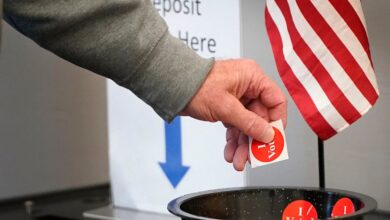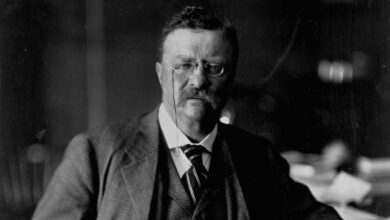Native, Black Americans in North Dakota 4 times likelier to be on parole, probation or in prison than white people

FARGO — Native Americans and Blacks are more likely to be imprisoned than their white counterparts in North Dakota, according to
numbers recently released by the state.
North Dakota’s prison head hopes the numbers will lead the state to make informed decisions about how to not only reduce the gap in race but overall recidivism in the justice system.
With 3.5% of the state’s Indigenous population in prison, on probation or parole, North Dakota Native Americans are 4.3 times more likely to be under Department of Corrections and Rehabilitation control compared to whites, according to statistics released by the state last month.
About 0.8% of the white population in North Dakota is under state corrections department control, while 3.1% of Black North Dakotans are in prison, on parole or on probation.
That means Blacks are 3.8 times more likely than their white counterparts to be under corrections department control.
Whites make up the largest percentage of state prisoners, parolees and probationers. Of the 7,938 people under DOCR control 5,183, or 65%, are white, the state said. Native Americans make up 19% of the DOCR population with 1,475, Blacks account for 10% with 808, Hispanics have 5% and 1% are categorized as “other.”
Native Americans and Blacks are overrepresented in the North Dakota prison system, compared to the state’s population. Indigenous people represent 6% of North Dakota’s residents while Blacks make up 3%, Hispanics 4% and whites 84%.
The state released the numbers in a dashboard that displays demographics of prisoners, parolees and probationers, including age, gender and race. It also shows the number of inmates in each facility. It’s the first of its kind in the U.S., corrections department interim director Dave Krabbenhoft said.
Publishing the statistics on disparities is part of the Restoring Promise initiative, a partnership between North Dakota and two criminal justice reform advocacy groups — the Vera Institute of Justice and the MILPA Collective. The project is focused on developing strategies to improve racial inequalities in the justice system, according to the state corrections department.
The state said it is still trying to determine what causes racial disparities in the North Dakota prison system, but it likely isn’t rooted in imprisonment alone, said Krabbenhoft, who explained that it’s an issue that will need help from every aspect of life, from schools to human services.
Native Americans are North Dakota’s largest minority group with 42,675 residents, second only to whites, who number 637,846, according to the state. There are 31,245 residents who identify as Hispanic in North Dakota, followed by 25,910 Black residents.
The overrepresentation of Native Americans in the criminal justice system is alarming, state Rep. Ruth Buffalo, D-Fargo, said.
There have been a number of researchers and prison reform advocates who have not only examined the statistics of racial disparities but have asked what has caused those gaps. Some believe disparities among Native Americans are the result of, in part, efforts to colonize the West in the 1800s, resulting in the genocide of Indigenous people, Buffalo said. Other policies against Native Americans have caused ongoing cycles that have impacted generations, she said.
The numbers aren’t surprising, said Dane DeKrey, advocacy director for the American Civil Liberties Union of North Dakota. A study conducted by the ACLU found Native Americans were six times more likely to be in prison than whites in 2017, while the rate was five times for Blacks.
He said he was pleasantly surprised North Dakota released the numbers, as states sometimes don’t want to admit there are racial disparities in their criminal justice systems.
“Anytime a state runs these numbers, they are faced with a hard truth that we incarcerate, arrest, pull over, do these things to minority communities at a much higher rate than their white counterparts,” he said.
The system won’t change until governments and residents think critically about why the issues exist and how to fix them, DeKrey said.
The fact that North Dakota is presenting its numbers signals the state wants to fix racial disparities in the prison system, said Clinique Chapman, a senior program associate at Vera.
“Our history really got us here, and so it’s not going to be an overnight process to … remove the very complicated layers nationwide or within North Dakota,” Chapman said. “But I do think North Dakota is on a great path, providing statistics in a transparent way.”
Current events, such as protests against racial discrimination and police brutality, did not prompt the DOCR to release the numbers when it did, Krabbenhoft said. The state has been working on publishing the numbers for “quite some time,” and the effort started during former Director Leann Bertsch’s tenure.
The director who headed the DOCR since 2005 left her post in July.
“We wanted to increase our transparency,” Krabbenhoft said.
The release of the numbers during a time when race is at the forefront of many discussions gives the state an opportunity to look hard at the statistics and determine what can be done to do better, Krabbenhoft said.
He said he hopes the data generates conversation and questions about “who it is we’re locking up, why are we locking people up and is there a way we can do things a little differently.”
“We want to bring reform to the correctional system,” he said. “We want to find ways to push resources upstream so we can prevent people from getting into the deep end of the correctional system.”
Jail or prison time may be appropriate in some instances, but if possible, the DOCR would like to find ways to keep people in their communities and get them the help they need, he said.
“When you incarcerate someone, you disrupt their lives,” he said. “Our core mission is still public safety, but we also want to make it so when people come to our system, we want them to leave as a better person and being a really productive neighbor when they go back.”
The way to do that is to be proactive in preventing incarceration, Buffalo said.
“A lot of it comes down to resources,” she said. “How do we strengthen communities, strengthen families?”
Having the conversation about disparities is uncomfortable, Buffalo said, but she feels the majority of North Dakotans are good people who are ready to do that. She doesn’t want to place blame on anyone but hopes residents can see this is an issue that has been affecting fellow North Dakotans for a long time, she said.
“I think we all have a responsibility to try to make the world a better place,” she said.
























































